A Study About The Emergence Of Portraits Of Women Reading And Their Social Meaning (読書する女性の肖像とその社会的な意味)
A Study About The Emergence Of Portraits Of Women Reading And Their Social Meaning, 2015
By Tadami Yamada
山田維史「読書する女性の肖像とその社会的な意味」 ある医療クリニックでの講義原稿の英語訳
In art history from the 18th to the 19th century, the theme of "portraits of women reading" emerged and became popular. This theme did not arise from any particular art movement. In fact, images of women reading books have been depicted for a much longer time. After going through the trend in the 19th century, the number of depictions has decreased significantly, but they have continued to be depicted in the 20th century and up to the present day of the 21st century. What exactly does the "portrait of a woman reading" mean? What did the painters of each era express with it? I would like to examine this below.
Women and books in religious paintings
As mentioned above, portraits of women reading have been painted since ancient times. However, they did not particularly emphasize the female figure. The book depicted in these paintings is the Bible. Therefore, regardless of gender, books were depicted as part of religious scenes or as something that should naturally be around saints.
However, religious paintings are strictly regulated by doctrine and reflect the tastes of each era, but painters did not paint them as they pleased with their imagination. Depending on the image, the church that commissioned the painting would refuse to accept it, and of course they would not pay the fee. Therefore, the book depicted was not included by the painter.
St. Anne's Education for the Infant Mary
Among the many images of the Virgin Mary - known by various names in different Christian denominations, but referred to here as this name - there is a painting of the young Mary being educated by her mother, Anna, to serve God. She is holding a book open. The source is the so-called "Education for the Infant Mary" in the "New Testament Apocryphal Book of James." However, the Book of James does not say "book." At some point, "education" and "book" were linked. And it became a symbol (attribute) of St. Anne in icon paintings. Other images that represent St. Anne include "Door," "With Mary," and "Holy Family (Infant Jesus, Joachim).”
Saint Catherine of Alexandria
As a female saint, the 3rd century "Saint Catherine of Alexandria" was a popular subject of painting during the Renaissance, and her attributions include the "wheel with a hook," the instrument of execution on which she was torn to pieces, the "palm leaf," a symbol of victory, the "sword," a sign of her suffering, and the "books," which represent her profound knowledge.
Regarding the suffering of Saint Catherine, it has been pointed out that the persecution of Christians by Pope Maximinus II in Christian historical documents may not be a fact of life.
Mary Magdalene
The presence of the Bible in the painting of Mary Magdalene's repentance would be a historical error if she was a real person. The Bible in book form should not have existed yet. Mary Magdalene is usually depicted as a woman with a voluptuous body, with a cross and a skull and perfume jar as her attributions. So why did the artist ignore the historical facts and depict the Bible there? The image of a "fallen prostitute" and a "book" of course had the Christian teaching that even such a woman was saved by Jesus, and that she had truly repented and walked the path to God through her faith to be canonized.
Mary Magdalene is identified by the attribution of the perfume jar.
However, painters are tricky creatures. Just as they realized a nude female image in the image of "the Virgin Mary breastfeeding the baby Jesus," the "Mary Magdalene images" seen in the 18th and 19th centuries may have had a similar hidden intention. Moreover, "Mary Magdalene and the Bible" may have been a distant harbinger of the modern image of a "nude woman" and a "book," wrapped in the veil of Christian iconography, like an ever-inflating balloon, waiting to burst in the 20th century.
Books are valuable assets
As is well known, until the printing press was invented by Gutenberg (c. 1398-468) around 1445, the Bible and other secular books were all handwritten, called manuscripts. Monasteries attached to large churches had scribes, miniature painters who painted decorative pictures, and bookbinders. Most of these were done by monks, but royal families and nobles had their own groups of craftsmen. The Limbourg brothers were famous manuscript miniature painters who served Jean, Duke of Berry (1340-1416) in France from the 14th to 15th centuries. Their work, called the "Book of Hours of the Duke of Berry," an illuminated manuscript of religious ceremonies that could be considered a calendar of the duke's daily prayers and rituals, is a treasure of France.
As for manuscript miniature painters, the work of an unknown man who is said to be the master of Psico is also very beautiful. The film "The Name of the Rose" very well recreated the process of manuscript production in the Middle Ages.
The Duke of Berry was one of the leading book collectors in the 14th century in Europe. The inventory of his estate at the time of his death has been preserved, and we know the approximate number of books he owned.
Secular works, plus 41 volumes of histories and 38 volumes of chivalry tales, which prove his interest in the world. There are also books that show his interest in natural phenomena. Marco Polo's "Travels," Gossan's "Similarities of the World," Aristotle's "Discourse on the Cours," Nicolas Aursum's "Book of the Spheres," "Flowers of the Orient," three "Maps of the World," one "Book of Prophecies," and one "Treatise on the Seven Planets." And a huge collection of religious books - 14 volumes of the Bible, 16 volumes of psalms, 18 volumes of the Divine Office, 6 volumes of Missals, and 15 volumes of Books of Hours, including the beautiful manuscripts mentioned above. ...That makes 158 volumes.
Do you think this amount is large or small? It would be an enormous amount considering the 14th century.
The playwright Molière (1622-1573), who lived 300 years after the Duke of Berry, had a library of about 350 books. A. Lang writes that this was discovered when Soulier discovered a catalog of Molière's library. However, after Molière's death, his widow disposed of them as junk, so they are now a mysterious library.
What does this episode suggest? In line with the theme of "Portrait of a Reading Lady," we might infer that Molière's widow had nothing to do with reading - that she lived a life ignorant of books.
The National Diet Library of Japan today has a library of 9.69 million books as of March 2013. This is the seventh largest in the world. Recently, a library in Russia caught fire, and out of the 14 million documents from the 16th century onwards, one million of them were destroyed.
Compared to these figures, you can imagine how valuable and expensive books were in the time of the Duke of Berry.
They were, in a sense, like treasures. Of course, ordinary people could not own them, and there were illiterate members of the nobility as well. This is very important. We must remember it.
In other words, what was happening socially? The "monopoly of knowledge."
The church and royalty and nobility had a monopoly on "knowledge." They deprived the common people of opportunities to approach "knowledge," and whether they were aware of it or not, they kept the people in a foolish state that made them easy to control. If such control was conscious, it would be called a "policy to keep the people ignorant." Of course, illiterate people also had experiential knowledge. It was knowledge as a way of living. However, this knowledge was limited to a narrow range. The meaning of the existence of "books" emerges in the social situation of the Middle Ages. Then, after several hundred years, common people began to emerge with great economic power. This was the rise of wealthy merchants.
Let's take a look at the Netherlands.
The common people's increasing wealth in the Netherlands from the mid-16th century onwards
"The Moneylender and His Wife" by Quentin Massys, who was active from the mid-15th century to the mid-16th century. This is a traditional painting, and its intention is "greed". However, the expressions of the couple in this painting by Quentin Massys do not seem very greedy. They are probably carefully examining the pawned item and valuing it. "Hey, what do you think of this? I think the workmanship is not bad," "Yes, it's well made," you can almost hear such a conversation.
By the way, what I'm paying attention to is the book that the wife is examining. It is a rather luxurious book with full-page illustrations. The wife may have been entranced by its beauty until just now. Although I can't call her a "woman who reads," such luxurious books were also coming into the pawnshop. We need to keep this in mind. There are also books on the shelves behind her. It is not clear whether these books came from the aristocracy or from the fallen wealthy. However, this painting shows that Dutch society was in great flux from the mid-16th century onwards.
The 17th Century Dutch Golden Age
After a long war, the Netherlands gained independence from Spain at the end of the 16th century. With the recognition of European countries, the Dutch Republic was founded, and the Dutch Golden Age of the 17th century (50 years from 1625 to 1675: according to Wallerstein) began. The East Holland Company was established, and colonial rule and a trading system were established. It was also during this period that relations with Japan were formed. Trade led to the rise of wealthy merchants, and the middle class also began to live a prosperous life. Artists from this period include Rembrandt van Rey (1606-1669), William Claes Heda (1577-1680), Jan Vermeer (1632-1675), and Jacob van Ruisdael (1628/29-1682). In the history of Dutch painting, the image of a reading woman has not received as much attention as landscapes, still lifes, and portraits, but just as landscapes, still lifes, and portraits were closely related to the prosperity of the Netherlands, it cannot be thought of as being separate from the wealth of life, including that of the middle class.
In this wealthy world, housewives seem to have read while keeping an eye on every corner of the household and running it. Reading was no longer something that was monopolized by monks in the church, nor was it limited to the domain of men.
Dutch still life paintings are a snapshot of a life filled with objects, and suggest the state of life and society that unfolded around them. For example, metalworking techniques, pottery techniques as culminated in Delft ware, horticulture and agricultural products, and even detailed depictions of butterflies and insects show the development of natural history. Of course, rare foreign objects show the Dutch expansion overseas. - One genre of still life painting is called "vanitas still life." "Vanitas" means "vanity." "Vanitas still life" is a "still life of vanity." What kinds of objects are depicted? Among the objects mentioned above, candles and candlesticks, musical instruments, mirrors, and in many cases, skulls are depicted. And sometimes books are also depicted.
Why books? In fact, "vanitas still life" is a variant of religious painting. - Human life is fleeting. No matter how rich or wealthy you may be, your youth will soon pass, and when you grow old, death is right in front of you. In this world, human life is a candle in the wind - the cherry blossoms of a heart that believes there will be another day, will a storm not blow in the middle of the night - this is a poem from the 14th century Japanese "Illustrated Biography of Saint Shinran" - and the same meaning is contained in "Vanitas Still Life". We must be careful that books, that is, knowledge and culture, were also considered vanity. Doesn't it remind you of Adam and Eve's "apple"? It is the "fruit of the tree of knowledge" that God forbade people from eating. God must have thought that humans should not acquire wisdom. "Wisdom" belongs to God. God's "monopoly of knowledge". Therefore, behind this tranquil painting of a Dutch "Portrait of a Woman Reading", there are two sides to the society of the Dutch Golden Age. Women began to engage in intellectual activities by reading books, even if only within the home. However, on the other hand, there was a trend caused by religion that considered it vanity. I would like to point out that women were caught in a dilemma due to the dual nature of this society.
I will give an example of a painting from the late 18th century, about a century after this period, in which we can still sense vestiges of vanitas still life. A woman reading a book (probably the Bible, since her head is covered with a scarf...) is depicted with tea utensils and a mirror in the background. I see in this painting the presence of a woman caught in the dilemma between social conventions and a desire to learn, as I have just mentioned.
The artist depicts castrating reading confined to the home, in candlelight at night, and in the somewhat dull light through a window during the day, and I would like to illustrate the artist's sensibility, which is difficult to understand without comparing many paintings. A society in which women read in abundant sunlight - could such an era come after the Dutch Golden Age?
About social conventions
Social conventions are mysterious and very formidable. A society - a very broad concept, ranging from a village community in geographical terms to a nation, and even a federal state formed by an agreement between these - is made up of various kinds of consensus. And while this consensus is a convention, "culture" is its foundation, and "culture" regulates the unconsciousness of people who belong to that society. To put it bluntly, "culture" means to "turn into" "text (words)". In other words, the culture of a society can be expressed in the language unique to that society. A different culture refers to an incomprehensible object, where the essence hidden in the abyss of a society of language B cannot be understood with language A.
This is a preface to what follows.
About corsets
In the 17th century, during the Dutch Golden Age, women's bodies were screaming in pain in other European countries, regardless of class. Corsets were squeezing them to the limit. In fact, the history of the corset is much older. It is generally believed that slim-fitting outerwear became popular for both men and women in the mid-14th century, and that it was necessary to adjust the natural shape of the body to fit this. However, there is also a theory that corsets already existed in ancient Rome. In any case, humans have been obsessed with the desire to transform their natural bodies, and have transformed various parts of their bodies. Even today, we have not escaped from this obsession. Perhaps we will never escape it. This was recognized as "beauty." Looking only at Europe, in the 16th century, emphasis was placed on the lower waist and buttocks, and in the 17th and 18th centuries, emphasis was placed on the breasts. The word corset began to be used in England in the 17th century. Modern superstar Madonna appeared on stage wearing a corset as a kind of outerwear (or outerwear, as they are called these days), and was applauded by both male and female fans, but using corsets as outerwear was a fashion in Spain in the 17th century.
Victorian women in England
As mentioned at the beginning, "portraits of women reading" became so popular that they formed a genre in the late 18th century and into the 19th century, but in England, it was during the time of Queen Victoria (1837-1901). The country was said to have taken over from the Netherlands and conquered the seven seas.
In terms of morals, it was a society that judged things as good or bad and had a strong tendency to suppress desires. As expected, during the reign of the queen, women were treated as gallantries, which was the habit of gentlemen. In social situations, women began to mingle in the circle of social conversations that were only for men. However, this could also be said to be a kind of "pretense." That is because, to escape from the restrictions of gallantry, men, especially upper-class men, created social gatherings called "gentlemen's clubs," which were men-only gatherings that even their wives could not enter. There, they talked about politics, economics, world affairs, and hobbies such as hunting and golf, enjoyed cigars that they could not enjoy in front of women, drank whiskey, and leisurely read newspapers and read books. This tradition remains to this day.
There is a term called "Lily Maid." It was the ideal image of a woman that Victorian men sought. In Christianity, the "lily" is a symbol of the virgin birth of the Virgin Mary, but in this era when men's romantic fantasies blossomed in literature and other fields, they sought women with the purity of a sheltered young lady.
And what about the women?
They read in the sunlight much more openly than the women of the Dutch Golden Age, and seemed to enjoy their time. However, under their elegant dresses, their bodies were squeezed from their chests to their waists by corsets, and they screamed. It was a symbol of chastity and solemnity, but it was also something that women themselves willingly did to show off their sexual appeal to men. It was not uncommon for women to faint when wearing corsets because of the extreme tightness. In some regions, girls began wearing corsets when they turned ten. Rich girls fastened them with silver hooks, while poor girls had them sewn into place. They remained in this state until they reached the age of seventeen, at which point they were married off. On the wedding night, the groom would cut the sewn-in corset off with a knife, but it seems that he would often cut himself into the body as well.
The doctor was aware of the harm that corsets caused to the body. However, this was the horror of the social conventions mentioned above. The doctor could not bring himself to say anything, because women without corsets were deemed to lack sexual appeal and were excluded from marriage. The doctor did not want to incur the lifelong resentment of his female patients. And, as a man, the doctor too could not help but be attracted to bodies deformed by corsets - large, protruding breasts and buttocks.
Let me also state the reality of the situation. In other words, many women who were born and raised in such a culture were unable to stand and walk without a corset. This was because it hindered the development of the back and abdominal muscles. Corsets were essential for walking.
Freud's concept of lipid (sexual energy) in psychoanalysis was inspired by Victorian economic concepts and reflected Victorian morality. You may be surprised that I said "economic concepts." At that time in England, it was believed that "there was a certain limit to the amount of energy an individual could consume, and if it exceeded that limit, it would become ill." In that era, a large number of women suffered from hysteria. Freud, a psychiatrist, wondered why.
Their minds and bodies were constricted by corsets and forced into the socially institutionalized chastity and strictness, and in fact, even though unconsciously, intense sexual desires and passions were swirling around. Because they were strongly suppressing this, in other words, the suppressed sexual energy became overpressurized like steam in a pressure cooker, causing confusion in the mind and body, which manifested as hysteria.
In fact, men in the Victorian era also developed hysteria. Freud first presented his paper "On Male Hysteria" at a conference in Vienna in 1886. It was met with fierce opposition. In a male-dominated society where old customs still lingered, the theory of male hysteria was simply unacceptable. Nine years later, in 1895, Freud republished "Studies on Hysteria" in collaboration with Josef Breuer.
Family Respect, Dignity, and Chastity: Man and Woman
Here is a painting with a rather unique perspective. It is a work called "Past and Present" by Augustus Leopold Egg (1816-1863), one of the leading painters of the Victorian era. It depicts the events in a relatively high-class household, and the wife, who is lying and writhing at her husband's feet, has just discovered her affair. Her husband has gotten hold of a note with a message from his lover. The older sister, who was playing with her younger sister, looks back at the sudden chaos between her parents, wondering what is going on. Rather than an explosion of anger, the husband's expression seems to be one of anguish and a sense of emptiness.
Is the message that the artist Egg is trying to convey through this painting a warning against lust? Or is it to expose the fact that in Victorian society, where respectability was the number one priority in household management, the gentlemanly appearance of the man and the chaste appearance of the woman who was supposed to be running a healthy household are beginning to crack?
The difference between painting and literature is that painting leaves it up to the viewer's heart and thoughts. It always confronts the viewer with a dual nature.
Let's look at another painting.
This is a work by John Bettie (1839-1893) entitled "Two Strings to Her Bow." This one goes without saying, but if I may add a little comment as a painter, it is that the three people are walking down a valley-like path. A path that lovers take is called Lovers' Rain. However, I don't think that the Lovers' Rain in this painting can be called romantic. Or perhaps the artist's point of view is being entrusted there.
The fact that repressed passions were swirling violently beneath the viewer's consciousness can also be proven from the perspective of criminology. For example, in England at that time, murders involving so-called old maids were common. In general, these women inherited huge inheritances, but in some cases they would serve as servants to look after their wealthy uncles and aunts in their old age, and in return they received inheritances, but they would miss their chance to get married and live alone in a hotel. There were quite a few women like that. They would meet a gentleman with good gallantry in a hotel restaurant or ballroom by chance. They thought they had "met him by chance," but the gentleman was only an appearance, and he was actually a conman looking for such women, or rather a murderer who preyed on marriage. It is not known how many people they had already killed. They seemed to be drawn to them by a magnet and went to be killed. They went to be killed in search of happiness. ...It was truly pitiful.
When you look at the Victorian "Portrait of a Lady Reading," you can see that it is full of elegance that makes you envious. In fact, these women probably did not think of themselves as "unhappy." This is because their cultural society did not have the words to talk about themselves from a different cultural perspective until Freud, an Austrian Jew, discovered their mental illness.
Let's take a look at "Traveling Companions" by Augustus Leopold Egg, who also painted the aforementioned "Past and Present" as a "Portrait of a Reading Woman."
The artist took great pains to arrange two young women with the same features and clothing in a symmetrical composition, but one is asleep with a basket of fruit beside her, while the other is awake and reading with a basket of flowers beside her. Symmetrical compositions generally express strictness, solemnity, authority, grandeur, religiosity, silence, stiffness, and rigidity. This artist has constructed symmetry with great strictness. The height of the head, the height of the shoulders, the height of the dress that bulges out in the distance. And only a few things break this strictness, saving the painting from stereotypical rigidity and elevating it to a lively beauty. Look at the three pull handles on the window shade. Each handle is moving in a different direction, which gives the impression of a train swaying. In fact, this is a "lie" in painting. According to the law of inertia in physics, the three handles should be swaying in the same direction. However, if they were painted like that, the picture would become rigid and not interesting at all. This is something that has been brilliantly calculated.
The explanation of the composition of the painting has become a little lengthy.
Thomas Carlyle (1795-1881) cast a mocking critical eye on Victorian costumes, which were tightened with corsets and then covered with a generous amount of fabric. He was a Scottish historian and critic, and a representative voice of the Victorian era. Carlyle wrote a book called "Sarter Resartus," which is translated in Japan as "Philosophy of Costume" and in the recently reprinted Iwanami Bunko as "Philosophy of Clothing" (translated by Ishida Kenji, 1946, reprinted in 1994 and 2010). Carlyle's argument can be summarized as follows: "The relationship between the human body and clothing is the site and material on which the beautiful edifice of the individual is built. With this comes increased security and comfortable temperature. Moreover, a sense of modesty unknown to primitive man was born beneath the clothing. And this is the mysterious, woodland temple of the divine within man. Clothing gave us individuality, it gave us distinction, it gave us social organization. It made us human, and it is they that are now turning us into clothes racks." Carlyle's words provoked outrage in England, at the height of the Victorian rise, because it was a direct criticism of Victorian social conventions. I don't need to make a comment here, but if I may, recalling the leaves of the tree in the example of Adam and Eve after they were tempted by the snake to eat the fruit of the tree of knowledge, I would say that "a mystical, forested temple for the sacred within man" is a symbolic expression of human "sexuality."
To digress a little, Natsume Soseki's debut novel, "I Am a Cat," was inspired by Carlyle's "The Theory of Costume," according to research by Shohei Ooka. As is well known, Soseki studied in London at the end of the Victorian era from 1900-1902 (Meiji 33) to 1902, during which time he visited the Carlyle Museum. After returning to Japan, while he was writing "I Am a Cat," he also wrote the short story "The Carlyle Museum" almost in parallel with it. In the book, it is not written that "I Am a Cat" was inspired by "The Theory of Costume," but according to Ooka, he probably did not want to reveal this because it was a novel he was writing. Since Ooka Shohei himself is a novelist, I was able to understand the subtleties of this matter.
Let me return to my digression.
Women in France from the 18th to 19th Centuries
To see how what I mean by "social conventions" and "culture" fluctuate in time and space, let's look at France, which overlaps with the Victorian era in England.
France also had a "Portrait of a Woman Reading." During the monarchy before the French Revolution (1789-1794/1799), when court culture was at its height, women wore corsets. However, when Napoleon Bonaparte came to power and became emperor (First Empire: 1804-1814/1815...the Hundred Days), women stopped wearing corsets. Therefore, women from this era are not wearing corsets under their dresses, although you would not notice it unless you looked closely.
Let's look at the portrait of Josephine, wife of Napoleon, painted by François Guérard (1770-1837). It is easy to see that she is not wearing a corset because she is wearing a high-quality, thin dress.
What is interesting is that the ladies of the court who went into exile during the revolution continued to wear corsets even when they went to other countries. They were unable to escape the culture that had saturated their minds and bodies. In that sense, the French Revolution truly brought about a change in attitudes within the country. But what is even more interesting is that when Emperor Napoleon was overthrown and the monarchy was restored, the corset made a comeback. This restoration not only revived the political form, but also the old-fashioned culture. In other words, people's ideas - even their attitudes - were returned to the old state. Perhaps people found peace of mind in the words that this was the "tradition" of our country. Women had to confine their bodies to the yoke of that tradition. That is, to the straitjacket known as the corset. The history of the 19th century in France was a time of rapid political change leading up to the outbreak of World War I in 1914, so it is difficult to generalize about the state of women in France, but it took some time for Coco Chanel (1883-1971) to appear in the world of French women's fashion. Coco opened a hat shop in Paris in 1910, and opened "Médione de Couture" in 1915. The following year, in 1916, she introduced women's clothing made from stretchy jersey that had previously been used for British fishermen's clothing, and it was a huge success. The time had come for women's bodies, which had been constricted, to be truly liberated by women's clothing made from materials used by male workers. This is important.
The Bishop and Femme Fantale
While the cultivation of women's intelligence is expressed through pictures of reading, what about the men who once monopolized knowledge and books?
Here is a picture that caught my attention. Artistically, it's nothing special, but it's "The Pleasure of Reading" by Jean-Georges Vibert (1840-1902: France).
It's a simple picture of a Catholic bishop laughing with amusement as he reads a book. What catches our attention is the book itself. It doesn't appear to be a Bible or a theological book, but a common book with a red cover. The title "Cortes" can be read. Cortes (Hernan Cortes: 1485-1547) is the man who led an army into the Gulf of Mexico in 1519 during the reign of Charles I of Spain, and destroyed the Aztec Empire and Aztec civilization by 1521.
So, what is the bishop laughing at so joyfully? Could it be at the turbulent, piratical adventures of Cortes? Could it be at the story of how he completely crushed and annihilated the Aztec religion, which Catholicism considered barbaric and which Cortes himself could not understand?
In any case, painters before Jean-Georges Vibert had never depicted clergymen immersed in the pleasure of reading such books.
The serial murders in the film The Name of the Rose, which I mentioned briefly earlier in relation to illuminated manuscripts, are based on a chapter on laughter in Aristotle's Book of Poetry, written in Greek and treasured in a monastic library from the 1300s. The monks read the chapter and become inspired to laugh, and are killed by their supervisors, who fear that the laughter will spread. In other words, laughter has been forbidden for clergymen since the Middle Ages. Laughter is the most human expression of emotion, and in order to get closer to God, one must transcend humanity.
The painter Jean-Georges Vibert's youth was during the Second French Empire, or the reign of Napoleon III (1852-1870). This period overlaps perfectly with the Victorian era in England, but at the time the United States was in the midst of the Civil War and Mexico was in financial difficulty. Mexico owed money to France and notified them of a reduction in interest payments. Napoleon III used this as an excuse to lobby Britain and Spain, and an allied force was sent to Mexico. They planned to conquer Mexico in one fell swoop, just like Cortes had done in Spain. However, five years of stale fighting ended in a complete failure. Napoleon III was the nephew of Napoleon Bonaparte and longed for his uncle's glory. He started one war after another, including the Crimean War, but failed miserably. ...So when the bishop in Jean-Georges Vibert's work "The Pleasure of Reading" smiles while reading a book about Cortes, we can see the situation in French society to a certain extent.
As for women, even though fashion had to wait for the appearance of Chanel, it seems certain that women's inner selves, that is, their consciousness, were changing.
Let's take a look at Adolphe William Bougereau's (1825-1905) work entitled "Manon Lescaut." "Manon Lescaut" is a novel by the Abbé Prévost, published in 1731, before the French Revolution. It is the seventh volume of the author's autobiographical collection of short stories, "Memoirs and Adventures of a Nobleman," and its official title is "The Story of the Knight Des Grieux and Manon Lescaut." It tells the story of men who are captivated by the charms of a woman named Manon Lescaut, and how they are ruined one after another. The detailed psychological descriptions foreshadow later Romantic literature, and in literature, there is a type of novel known as the "femme fantale" (the woman who ruins men), which may or may not be called a genre. It is generally accepted that Prévost's "Manon Lescaut" was the first of this type of novel. However, the novel was banned in Grance at the time. The reason was that it was a story about a lewd woman who disrupted social morals. However, having been banned in this way, it became even more popular through pirated publishing and other outlets.
More than 100 years later, the painter Adolphe-William Bougereau painted "Manon Lescaut." The book the woman is reading is the novel "Manon Lescaut," but it seems the woman sees herself in Manon Lescaut. Or perhaps she is completely one with him.
In any case, I believe that the artist has captured in this painting a French woman who, as social mores change with the times, so does the consciousness of women. She is actively seeking to liberate her own mind and body.
Renoir, Lautrec, Mary Cassatt, and Van Gogh
It was during the Napoleon III era that the Dutchman Vincent van Gogh (1853-1890) came to France. By this time, books were probably quite common in the lives of ordinary people. Van Gogh mainly produced works in France, and during his time in the Netherlands, he did not paint a single painting of a person reading, but he did paint four portraits of Marie Ginoux, wife of Joseph-Michel Ginoux, the proprietor of the Cafe de la Gare, who rented a bedroom from him during his time in Arles when he lived with Gauguin, with a book. During the same period, he also painted a work called "Woman Reading a Novel," which is currently owned by an individual in Japan. He also painted books as still lifes, and the title of the book depicted in "Still Life with Plaster Torso, Roses, and Two Novels" (1887) can be read as "Belami." It is a novel by Maupassant published in 1885. Van Gogh read this book less than two years after it was published. Bellamy means a beautiful male friend.
Pierre-Auguste Renoir 1841-1919)
“Reading” by Kuroda Seiki while studying in France
Kuroda Seiki (1866-1893) of Japan studied in France from 1884 to 1893. The Second Empire of Napoleon III had ended, and the Third Republic was established in 1875. Kuroda's study abroad was to study law, but as he became acquainted with the painter Yamamoto Hosui, who had previously studied in Paris, he began to aspire to be a painter. In 1891, Kuroda submitted a painting to the Salon organized by the French Artists Association and was selected. This is Reading. It is currently in the collection of the Tokyo National Museum. It was painted at the height of the popularity of "images of women reading". The circumstances surrounding the painting are unknown, but as an art student, he may have been sensitive to trends. Although it was painted by a Japanese artist, I think that it is completely detached from the social climate in Japan and completely captures the daily life of women in French society. However, it must be pointed out that in the previous year in the bright, sunny Arles in southern France, Van Gogh had even broken away from Impressionism, which had been recognized 10 years earlier, and was heading towards paintings based on a new artistic methodology, that is, paintings that would express the inner world of the painter, which would become the trend of thought in the 20th century. Van Gogh's struggle was to integrate himself with nature, to sublimate himself into the yellow sunlight that poured down upon him. It can be said that Kuroda Seiki had not thought about such things at all.
Kuroda Seiki (1866-1893 :Japan) "Reading" 1891
Selected for the French Artists Association Salon
The Collection of Tokyo National Museum
The 20th Century and the Present
Now, the era has finally entered the 20th century. The motif of "Portrait of a Reading Woman" did not disappear from 20th century paintings. It is certainly not a mainstream motif, but the female figure shows a completely new appearance.
Before glancing at some examples, I will look at the works of Pablo Picasso (1881-1973), the greatest painter of the 20th century, whose creative work was extremely closely connected to women.
Pablo Ruiz Picasso (1881-1973)
The first is a painting of his mistress Marie-Thérèse asleep with a book open on her lap. She is half-nude and one of her breasts is spilling out. Picasso was officially married twice in his life, and had eight women, including those with whom he had relationships similar to marriage or as a mistress. Three of them gave birth to Picasso's children. Marie-Thérèse became Picasso's mistress when she was 17, and gave birth to a daughter. Picasso considered divorcing his wife Olga, but gave up on the idea when he found out that she would take half of his assets, including his artwork. This painting, depicting a half-naked Marie-Thérèse with a book, was auctioned in 2011 and is now in the possession of a Russian collector.
Next is “Jacqueline Reading” (1957).
Jacqueline Roque, depicted in this painting, was 24 years old when Picasso fell in love with her at the age of 72. She was by his side during his final moments, and unable to bear the sense of loss after his death, committed suicide. Marie-Thérèse followed suit and committed suicide. Before meeting Jacqueline, Picasso had been abandoned by Françoise Giraud, with whom he had given birth to two children, and was divorced. She is said to be the only woman to have dumped Picasso. Shocked by this, Picasso became a recluse. Françoise married another man and took her child. Françoise asked Picasso to acknowledge her child, but seven years later, Picasso asked her to leave her husband and remarry him. Françoise took her child and filed for a mutually-agreed divorce. Immediately afterwards, Picasso married Jacqueline. This is seen as Picasso's revenge against Françoise. --Françoise Giraud is 94 years old as of 2015, and lives in New York, where she is active as a painter.
However, I think it can be said that Picasso's relationship with Jacqueline was a happy one. She was a very strong woman, and protected him from the media and art dealers who flocked to him, so much so that she was called Picasso's gatekeeper. "Jacqueline Reading" is a lithograph, but it captures well the strong and strong-minded Jacqueline. The "book" is speaking. I think it symbolizes her true essence. And while this work is within the historical tradition of the "image of a woman reading," it can also be said to exude the scent of a modern woman who has broken away from the 19th century spirit.
"Marie-Thérèse Walter Asleep in a Chair with a Book on Her Lap"
"Jacqueline Reading a Book" 1958
Henri Matisse (1869-1954)
If you look at the changes in Matisse's "Portrait of a Woman Reading" paintings by the time of their creation, you will notice something interesting. The first painting was made when Matisse was 25 years old, at the end of the 19th century. The heavy feel of the paintings can be said to be a characteristic of his youth, but there was nothing light in the artist's heart. The style of painting called "Matisse" had not yet been established.
If you line up his works, you will see that with age, a very French lightness has appeared in both color and form.
The subject of the painting, "reading," itself suggests that women in society are changing, but I think that it is expressed as a witty style of painting without ostentatiously emphasizing it. This is the essence of Matisse's art.
Paintings of reading groups from the late 19th century to the early 20th century
Among the images of women reading from the late 19th century to the early 20th century, there are works depicting reading groups or reading aloud gatherings. However, my research on this point has not progressed. For reference, let's take a look at those works.
Wilhelm Amburg (1822-1899 :Germany) "Reads 〈Goethe's The Sorrows of Young Werther〉" 1870
Alexander Mark Roth (1841-1916 :British) "Forbidden Foreign Books" 1897
In the painting on the top, four young girls are listening to a reading in a forest. The artist has given it the title "Reading Goethe's Werther." This is, of course, The Sorrows of Young Werther, which was published in 1774, 100 years before this painting was created. ...A young man named Werther secretly falls in love with a young woman from a lawyer who has taken an interest in him. The two of them sometimes have intimate conversations. However, the young woman decides to get married, and her fiance arrives. Werther makes up his mind and goes to confess his feelings to her. However, to his surprise, the young woman is extremely cold towards him. In despair, Werther commits suicide. ...
After this novel was published, many young people around the world were influenced by it and committed suicide. I would like to point out that such a social situation existed behind this painting.
Let's look at the other painting on the midle. It is titled "Forbidden Foreign Books."
An elderly woman hiding behind a curtain on the right side of the picture is listening to the women's reading group. It seems to be the library of a boarding school for girls, and the woman dressed in black listening seems to be the dormitory supervisor or the principal. I don't know what book the girls and the old man are reading, but judging from their appearance, I think that new foreign ideas are coming in and beginning to take root in their minds.
The next picture shows girls from an orphanage, and perhaps some new ideas are coming in to them as well.
I think that these pictures point out an aspect of the reading environment for women in the early 30th century that is difficult to notice. And I think that it is from this environment that is difficult to see that the movement of the female image in the 2nd century that I will talk about later arises.
Walter McEwen (1858-1943 :America) "Dutch Interior"
Edmund Charles Tarbell (1862-1938 :America) "Three Women Reading"
Reading image in a free-spirited posture
Now, let's go back to the previous part again.
Picasso's Marie-Thérèse was half-naked, but 20th-century female figures, such as the "Portrait of a Woman Reading," reveal a free-spirited pose.
At the beginning of this study, I said about Mary Magdalene that the artist's hidden intention in the nude Mary Magdalene and the Bible (book) may have been a distant precursor to the modern image of a "nude woman" and a "book," waiting to burst forth in the 29th century.
In fact, the painting of a naked woman reading, which appeared at the end of the 19th century and has continued into the 20th and 21st centuries, shows a characteristic that did not exist before that, and it appears not only in paintings but also in photographs.
Théodore Roussel (1847-1926 : French-British) ”Woman Reading” 1887
Nudes have existed since ancient times
It goes without saying that nude figures have a long history. A nude statue that consciously depicts a pregnant woman with an emphasis on the breasts and waist has been excavated from the Paleolithic Willendor site in Austria, dating back 10,000 to 20,000 years. Around 5000 BC, nude female statues as fertility deities existed in civilizations around the world. For ancient people who had to constantly fight hunger, abundant fertility was a deep desire. Out of reverence for the mysticism of women giving birth, these statues were likely used in incantations to pray for fertility.
Around 5000 BC, Northern Mesopotamia, Tokyo, Private Collection
Around the 5th century BC, known as the classical period of ancient Greece, along with nude male statues, healthy, well-proportioned nude female statues that glorify the graceful female body, as represented by the well-known Venus de Milo (unearthed in 1820), appeared. Much later, female nudes also appeared in paintings, and while they were bound up with religion, they continued to color art history through religious paintings such as the Virgin Mary breastfeeding the infant Jesus and Mary Magdalene, or through mythological and historical anecdotes. However, there was no motif of a nude woman reading.
Why did it appear at the end of the 19th century?
20th century women reading naked
Felice Canrato (1883-1963 :Italy)
Howard Chandler Christy (1873-1962 :America)
I believe that this is not unrelated to the women's liberation movement.
Women's Liberation Movement
I won't go into detail about the women's liberation movement (feminism), but in terms of intellectual history, it was pioneered in England in 1792 by Mary Wollstonecraft (1759-1797; mother of Mary Shelley, author of Frankenstein), who argued in her book A Vindication of the Rights of Woman in 1792, followed by John Stuart Mill in 1869, who claimed that the conventional wisdom that women are intellectually inferior to men is due to the fact that women and men are educated differently in society. Furthermore, it is generally accepted academically that a similar idea emerged in France in the 1830s, a time when the political system was in a state of great turmoil after the fall of Emperor Napoleon, and the words "feminism" and "feminist" had become common by the end of the 19th century.
John Obey (1761-1807 :British) "Portrait of Mary Woolstonecraft"
I should confirm here that I said "conventional wisdom" again. The conventional wisdom is that "women are born... biologically and intellectually inferior, emotional and sentimental, and subordinate to men; they should simply stay at home and do housework and childcare." If this conventional wisdom that structures society is biologically true, then social reform aimed at improving the status of women would no longer be possible.
No, this is not the case. The discrimination is not due to biological differences in sex. It is a gender difference imposed by social consciousness and social systems. Over the course of 200 years, a new women's liberation movement has been born on the foundations of feminism pioneered by Mary Craft and John Stuart Mill.
The "Women's Revolution," a movement to eliminate gender discrimination, began in the late 1960s. The origins of the "Women's Liberty" movement date back to 1963, when American women's liberation activist Betty Friedan published her book "The Feminine Mystique," in which she surveyed white middle-class housewives and revealed that although they appeared happy at first glance, deep inside they were dissatisfied and anxious due to the femininity that had been imposed on them. This caused a great social reaction. Betty Friedan campaigned for "a society in which gender discrimination was eliminated and women could develop their potential in an equal society." She was active in promoting the ratification of the "27th Amendment to the U.S. Constitution on Equal Rights for Men and Women."
The term "Women's Liberty" was also used frequently in Japan. Many people must remember a woman who became a media darling after saying "the sting of a bee." In Japan, before the movement like that in the United States became a major social wave, it disappeared superficially like a passing fashion. This is because women's liberation cannot be achieved by simply defeating or destroying men.
In fact, in the latter half of the 1970s in the United States, the women's liberation movement seemed to have lost its original radicalism. It was moving deeper, perhaps even moving towards research that could be called a reconstruction of all academic fields. In other words, humanities-related fields in general, such as philosophy, literature, history, sociology, and psychology, had been constructed from a male perspective until then. It was now recognized that these fields needed to be reconstructed from a female perspective. This is what is generally referred to as "women's studies" today.
Gender theory emerged in the course of studying women's studies. It is a concept put forward by Joan Scott, a professor at the Institute for Advanced Study in Princeton, in her 1988 book "Gender and the Politics of History."
Gender means "social sex," but it is a concept that contrasts with "biological sex," and refers to "socially and culturally constructed sex." To put it more simply, what is masculine and feminine differs depending on each culture, including gender roles. For example, in one ethnic group, women work outside, and men spend all day looking into a small mirror and preoccupied with putting on makeup. In the culture of this ethnic group, this is femininity and masculinity. I just said "preoccupied." Here, I am already trapped by the culture to which I belong. Feminism only focuses on women, but gender theory deals with both women and men at the same time. This made it even more effective as a strategic theory for the women's liberation movement. What this means is that the concept of gender, or "social sex," is used to analyze knowledge and how society is organized. How discourse and knowledge are connected, and how power and other forces are connected. The recognition of one's existence and the construction of one's subjectivity. And how to build a real society... This is the central theme of women's liberation today.
Let's line up some paintings to see how artists have captured the image of reading women in the 1960s, before the Women's Liberal Movement.
Daniel Gerber (1880-1958 :America)
Rene Magritte (1898-1967 :Belgium) "The Obedient Rector's Wife"
Edward Hopper (1882-1967 :America) "Train 290 Cabin C"
Adelaide Giannini (1898-? :Italy) "Balcony"
Balthus (1908-2001 :France) "Catea Reading a Book" 1968-76
What can be said is that they are already clearly different from the women of the past. People in the past would have frowned, saying, "What bad manners! What an indecent outfit!"
René Magritte's painting is titled "The Obedient Rector's Wife." She is glaring at a book. What is written there? In light of the title, it is probably something that overturns her morals of being obedient to her husband.
René Magritte's artistic work was to reverse "conventional wisdom."
Nude as self-proof and self-assertion
And also male painters ...
Marshall Goodman (1916-? :America)
John Carlin (1962- :America)
Jason Patrick (1979- :Canada)
And photographers too...
Eddie Woods (1940- :America) 1960s
Vita Smara (Czech Republic :Young contemporary photographer)
photographer unknown
Well, my investigation is nearing the end.
I see the nude figures that are characteristic of 20th and 21st century "Portraits of Women Reading" as a subjective self-assertion against established social norms. The artists of these paintings are female, although some are male. The female models naturally expose their bodies in their everyday environments, and are sometimes even defiant.
I recall that in the 1980s, when I participated in international exhibitions as an illustrator, there was a trend for works depicting female nudes by male artists to be rejected. The idea was that women should do things for themselves...men would not understand how men have distorted the minds and bodies of women to be expressed.
The situation in which women are discriminated against and subjected to cruelty due to ethnic customs or religion still exists today all over the world.

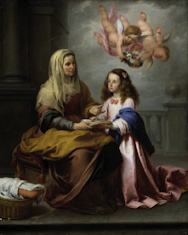




















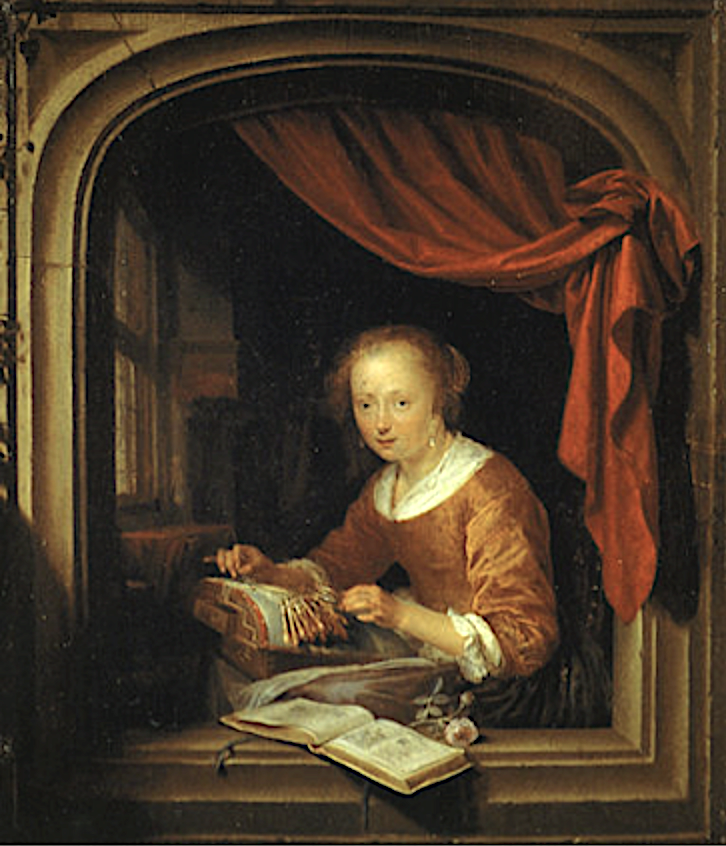




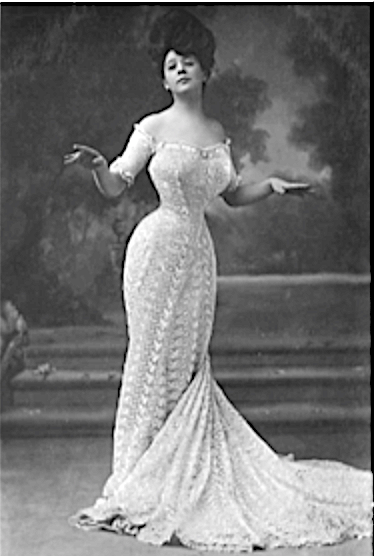











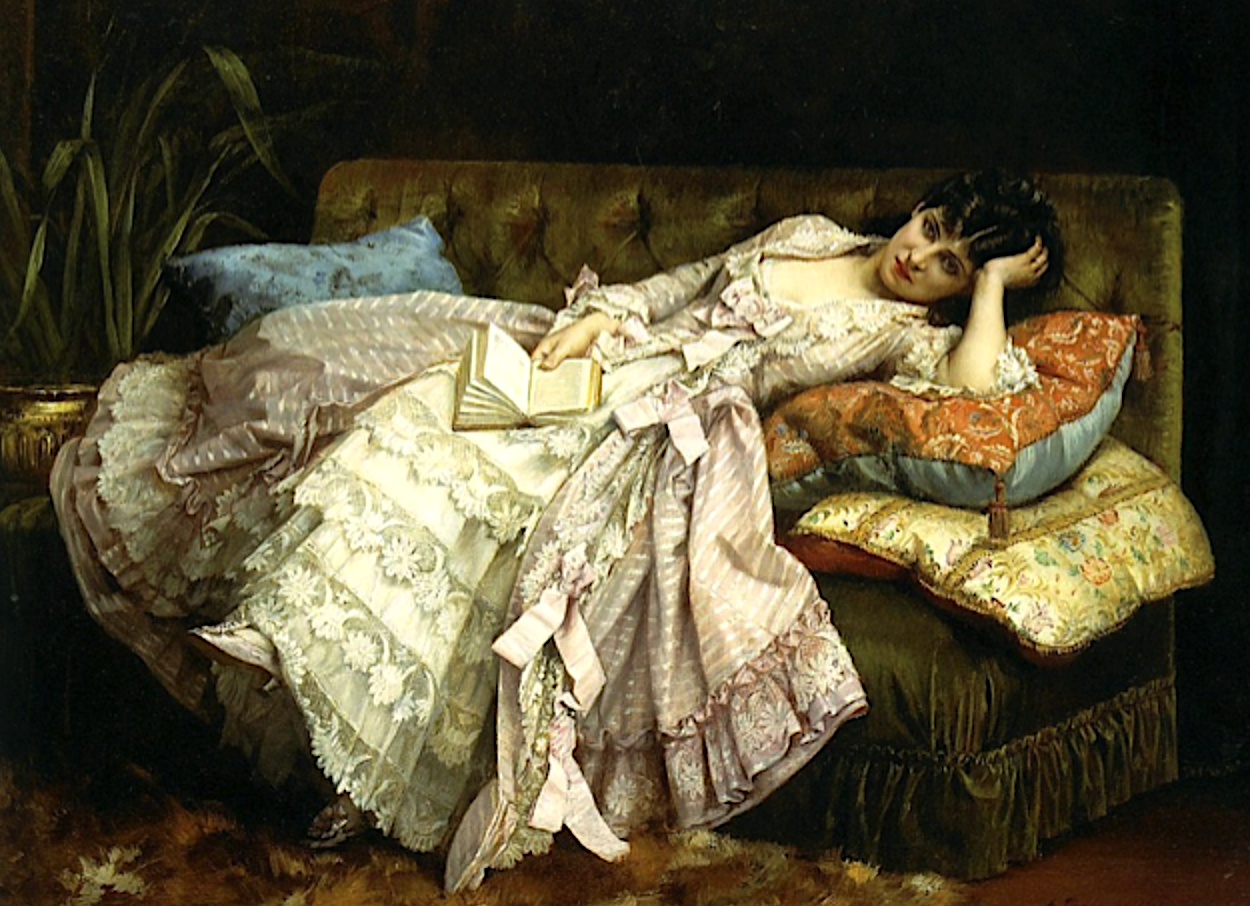

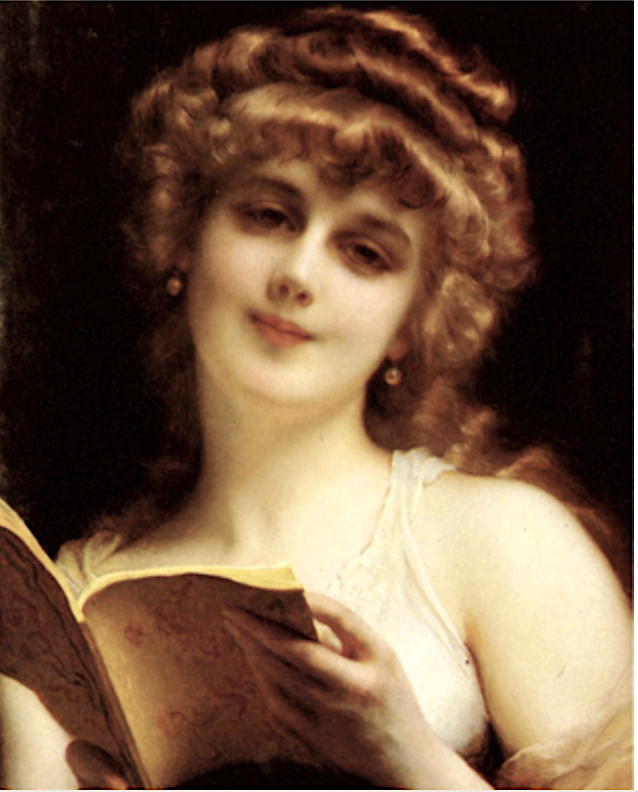
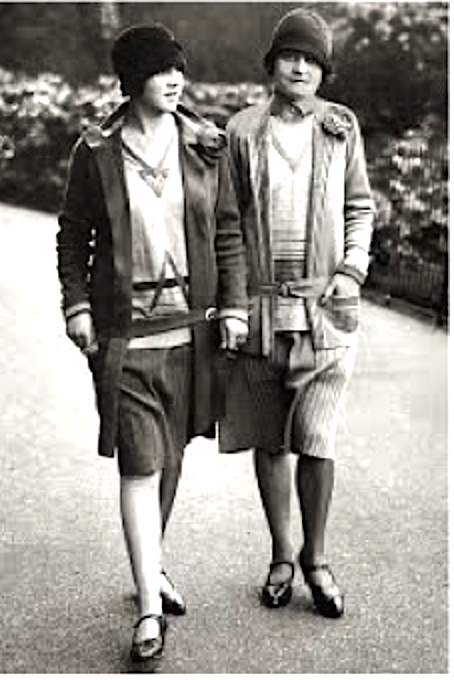

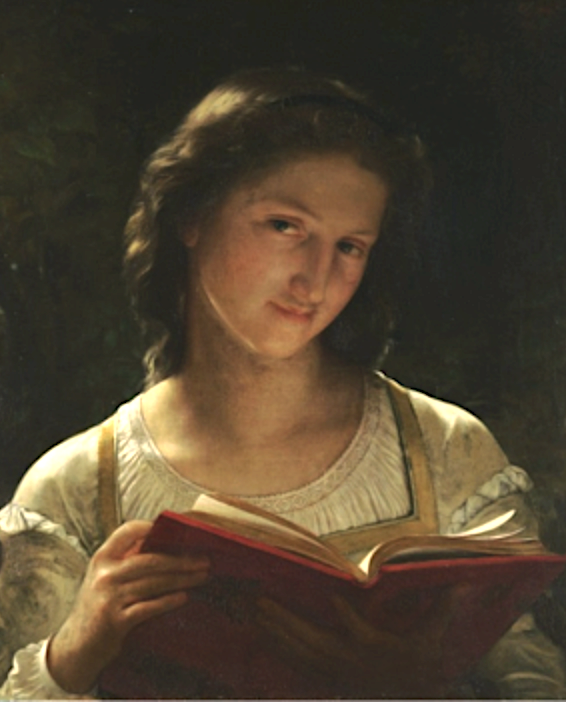






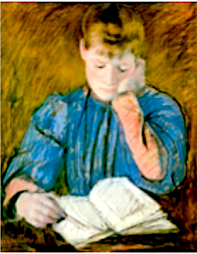

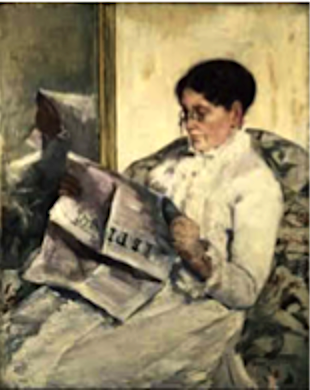

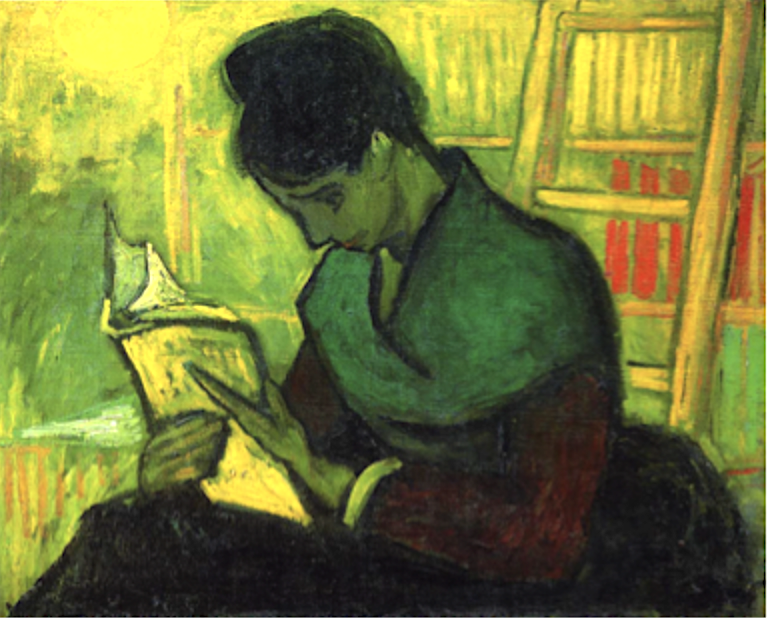




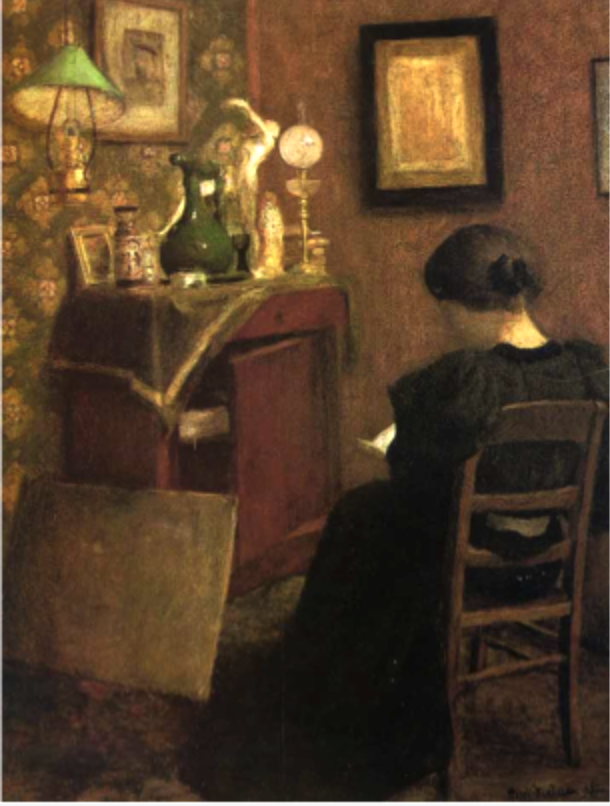

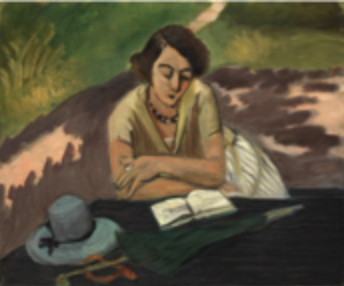


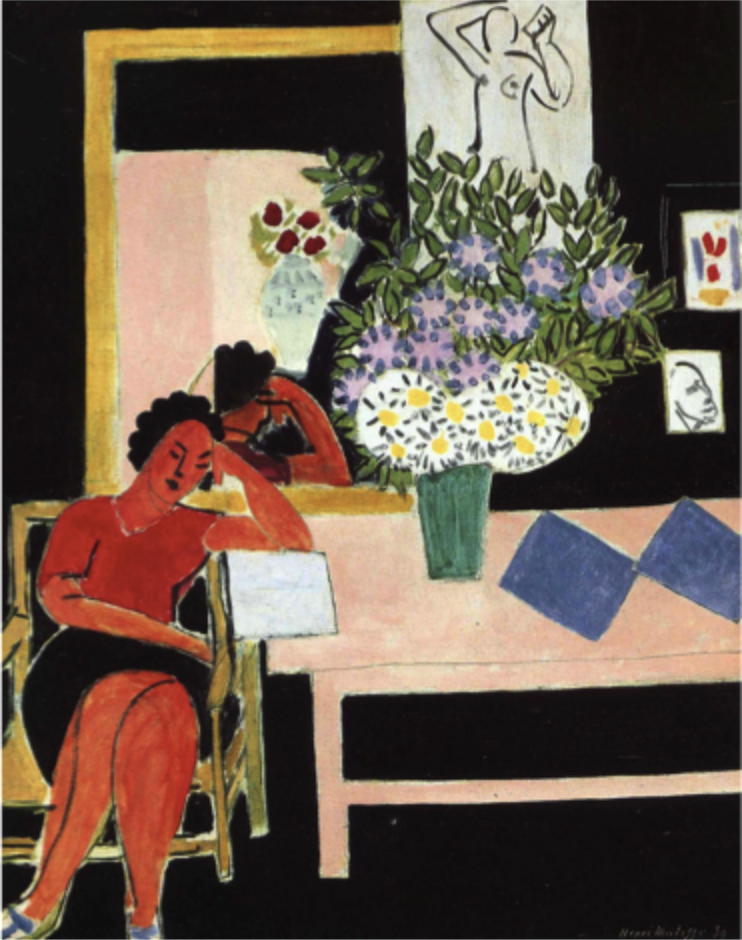




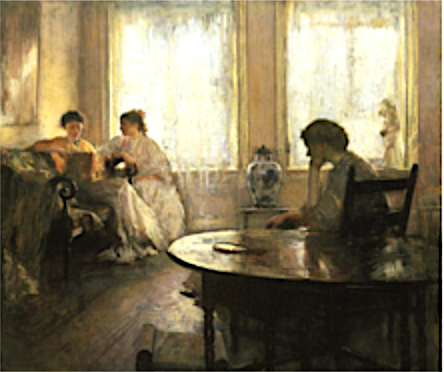



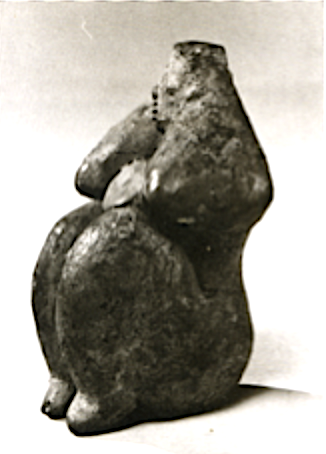













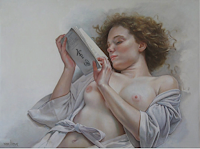











コメント
コメントを投稿